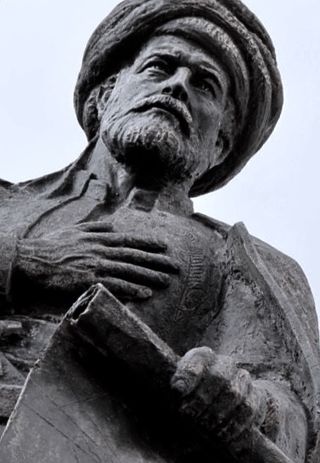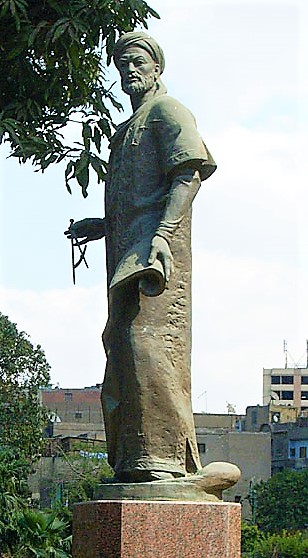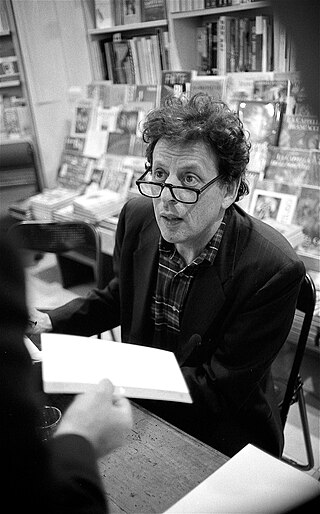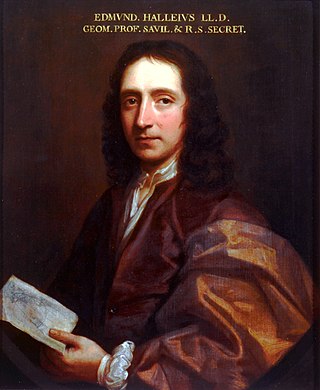
Amateur astronomy is a hobby where participants enjoy observing or imaging celestial objects in the sky using the unaided eye, binoculars, or telescopes. Even though scientific research may not be their primary goal, some amateur astronomers make contributions in doing citizen science, such as by monitoring variable stars, double stars, sunspots, or occultations of stars by the Moon or asteroids, or by discovering transient astronomical events, such as comets, galactic novae or supernovae in other galaxies.

Astronomer Royal is a senior post in the Royal Households of the United Kingdom. There are two officers, the senior being the astronomer royal dating from 22 June 1675; the junior is the astronomer royal for Scotland dating from 1834. The Astronomer Royal works to make observations to improve navigation, cartography, instrument design, and applications of geomagnetism. The position was created with the overall goal of discovering a way to determine longitude at sea when out of sight of land.

A constellation is an area on the celestial sphere in which a group of visible stars forms a perceived pattern or outline, typically representing an animal, mythological subject, or inanimate object.

Christopher Columbus was an Italian explorer and navigator from the Republic of Genoa who completed four Spanish-based voyages across the Atlantic Ocean sponsored by the Catholic Monarchs, opening the way for the widespread European exploration and European colonization of the Americas. His expeditions were the first known European contact with the Caribbean and Central and South America.

Ahmed Muhiddin Piri, better known as Piri Reis, was an Ottoman navigator, geographer and cartographer. He is primarily known today for his maps and charts collected in his Kitab-ı Bahriye, a book that contains detailed information on early navigational techniques as well as relatively accurate charts for their time, describing the important ports and cities of the Mediterranean Sea.
Year 1502 (MDII) was a common year starting on Saturday of the Julian calendar.

Columbus Day is a national holiday in many countries of the Americas and elsewhere, and a federal holiday in the United States, which officially celebrates the anniversary of Christopher Columbus's arrival in the Americas. Columbus went ashore at Guanahaní, an island in the Bahamas, on October 12, 1492. On his return in 1493, Columbus moved his coastal base of operations 70 miles east to the island of Hispaniola, what is now the Dominican Republic and established the settlement of La Isabela, the first permanent Spanish settlement in the Americas.

Martin Behaim, also known as Martin von Behaim and by various forms of Martin of Bohemia, was a German textile merchant and cartographer. He served John II of Portugal as an adviser in matters of navigation and participated in a voyage to West Africa. He is now best known for his Erdapfel, the world's oldest known globe, which he produced for the Imperial City of Nuremberg in 1492.

The year 1897 in science and technology involved some significant events, listed below.

Abū al-ʿAbbās Aḥmad ibn Muḥammad ibn Kathīr al-Farghānī also known as Alfraganus in the West, was an astronomer in the Abbasid court in Baghdad, and one of the most famous astronomers in the 9th century. Al-Farghani composed several works on astronomy and astronomical equipment that were widely distributed in Arabic and Latin and were influential to many scientists. His best known work, Kitāb fī Jawāmiʿ ʿIlm al-Nujūmi, was an extensive summary of Ptolemy's Almagest containing revised and more accurate experimental data. Christopher Columbus used Al Farghani's calculations for his voyages to America. In addition to making substantial contributions to astronomy, al-Farghani also worked as an engineer, supervising construction projects on rivers in Cairo, Egypt. The lunar crater Alfraganus is named after him.

Savona is a seaport and comune in the west part of the northern Italian region of Liguria, capital of the Province of Savona, in the Riviera di Ponente on the Mediterranean Sea. Savona is the main center of the Italian Riviera.
Wolf Bickel is a German amateur astronomer and a prolific discoverer of asteroids, observing at his private Bergisch Gladbach Observatory, Germany. He is the most successful German discoverer of minor planets.

Juan de la Cosa was a Castilian navigator and cartographer, known for designing the earliest European world map which incorporated the territories of the Americas discovered in the 15th century. De la Cosa was the owner and master of the Santa María, and thus played an important role in the first and second voyage of Christopher Columbus to the West Indies.

Abraham Zacuto was a Castilian astronomer, astrologer, mathematician, rabbi and historian who served as Royal Astronomer to King John II of Portugal.

The Voyage is an opera in three acts by the American composer Philip Glass. The English/Latin/Spanish libretto was written by David Henry Hwang.

A star chart is a celestial map of the night sky with astronomical objects laid out on a grid system. They are used to identify and locate constellations, stars, nebulae, galaxies, and planets. They have been used for human navigation since time immemorial. Note that a star chart differs from an astronomical catalog, which is a listing or tabulation of astronomical objects for a particular purpose. Tools using a star chart include the astrolabe and planisphere.

A total lunar eclipse occurred on 1 March 1504, visible at sunset for the Americas, and later over night over Europe and Africa, and near sunrise over Asia.

Christopher Columbus is a bronze statue of Italian explorer and navigator Christopher Columbus. It was installed during 1933 in Chicago's Grant Park, in the U.S. state of Illinois. Created by the Milanese-born sculptor Carlo Brioschi, it was set on an exedra and pedestal designed with the help of architect Clarence H. Johnston. It was removed and put in storage in 2020.

EdmondHalley was an English astronomer, mathematician and physicist. He was the second Astronomer Royal in Britain, succeeding John Flamsteed in 1720.